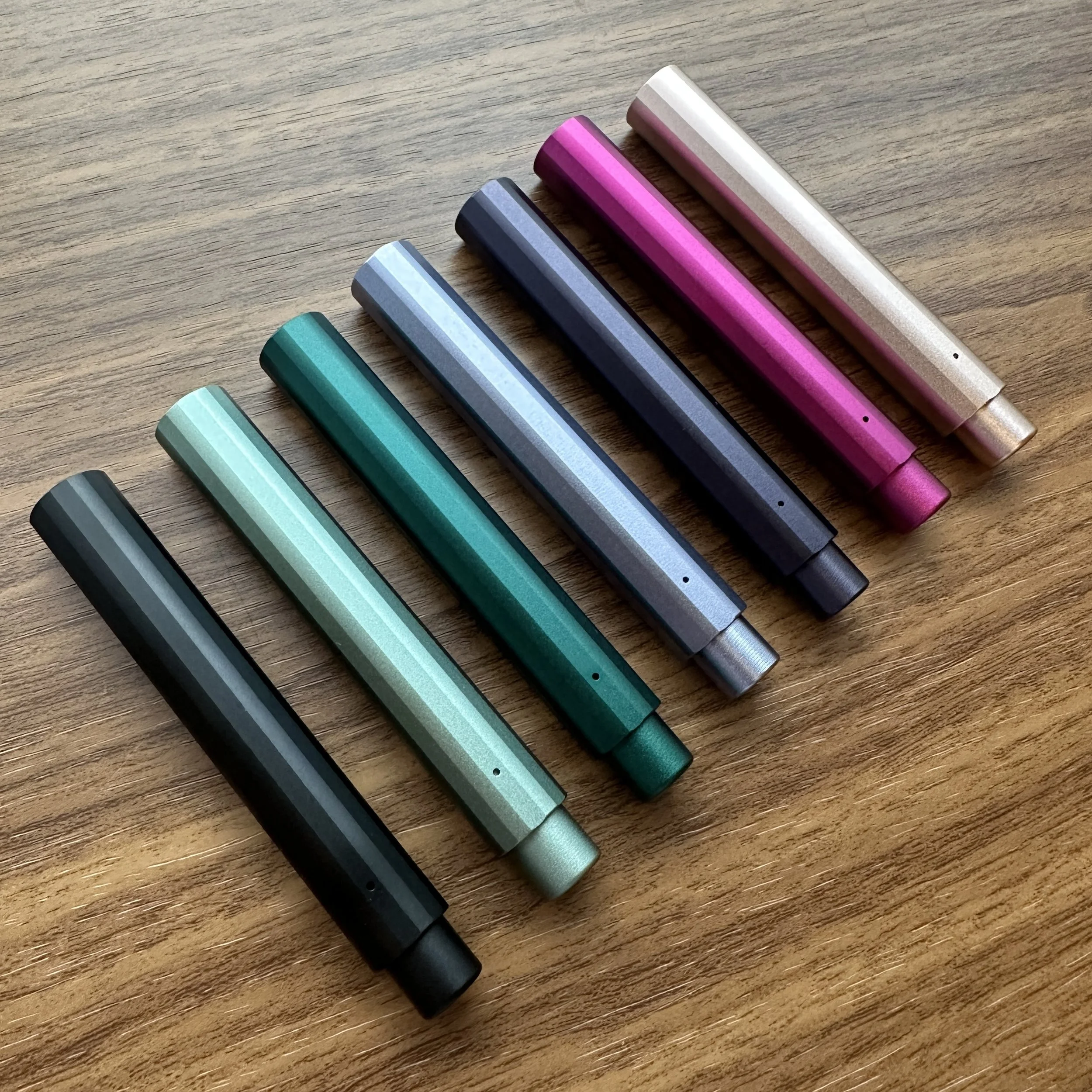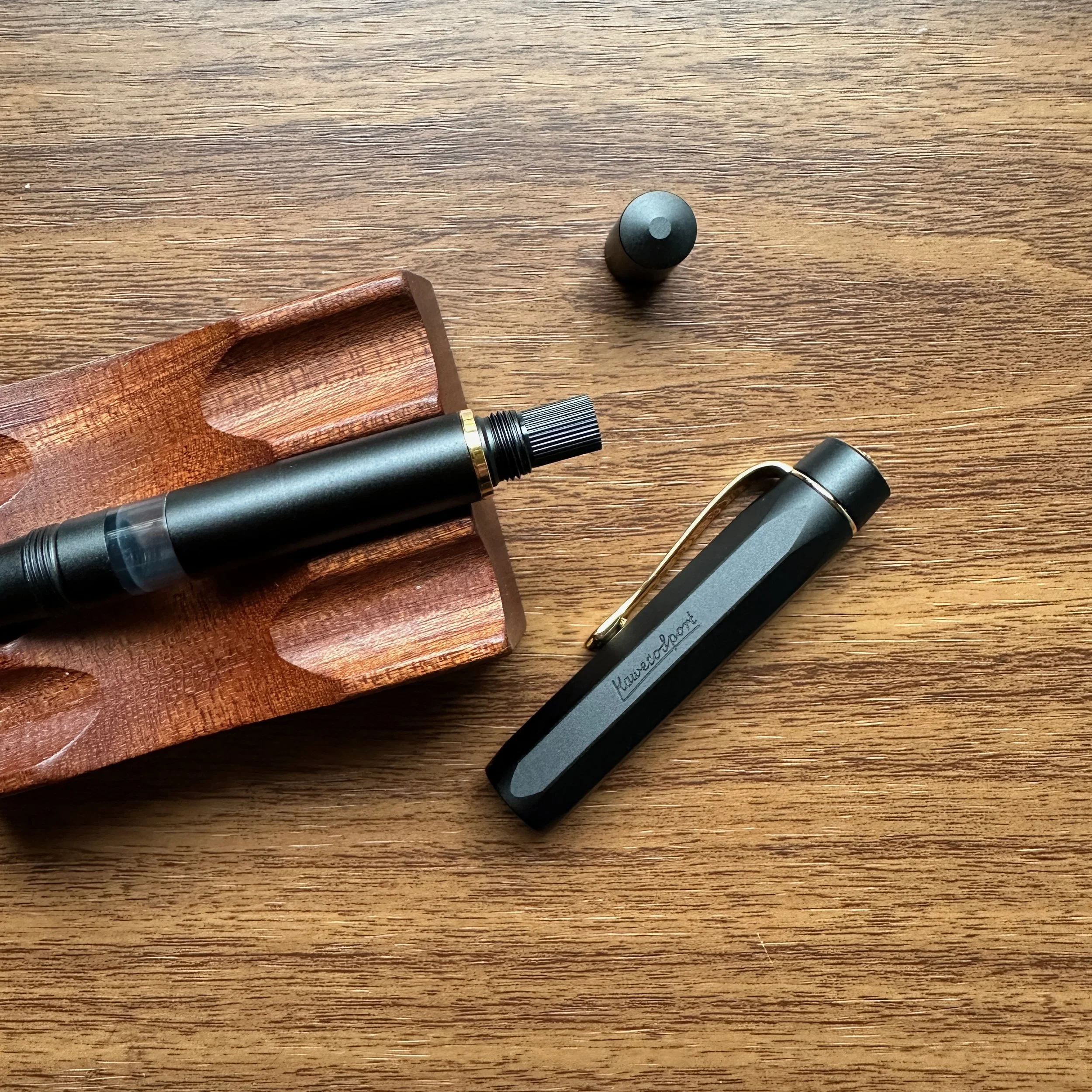I write a lot about recommendations for a "first fountain pen", and readers/customers frequently ask me for advice on which fountain pens they should they should buy based on various price points and other criteria. BUT, I realize I haven't written much at all on my own first "nice" fountain pen: the Waterman Laureat.
The Laureat features the classic Waterman clip and branding around the cap band.
Waterman made the Laureat during the mid-to-late 1990s, and possibly into the early 2000s. (I'm not a vintage expert - all I know is that it's no longer available and by the time I was back into the hobby in 2010, they had disappeared from store shelves.) I purchased this particular pen in London, in 1999, when I lived in Strasbourg, France and spent many a weekend visiting friends who were studying in London at the same time. As a slimmer pen, the Laureat made for a great introduction into the world of fountain pens because at the time it felt very similar to the "stick" ballpoints and rollerballs that I regularly used in school. It slotted easily into my Filofax pen loop, and the cap was designed to post easily onto the back of the barrel. Despite the lacquered brass construction, the slim barrel meant that the pen maintained a usable weight and decent balance.
You can make out the ring of ink around the base of the nib. There is also some wear to the gold plating, which is to be expected after 25 years!
Nonetheless, like a few different 1990s-era Waterman pens, the Laureat had one glaring flaw: It is, by far, the messiest fountain pen I have ever used. The Laureat features a friction-fit cap and a ribbed grip that somehow interact to pull a drop of ink from the nib whenever you cap/uncap the pen. The result is a ring of ink around the end of the section, just below the nib, that's not enough to constitute a full-on leak, but is just enough to stain your fingers. You can avoid the issue somewhat by gripping the pen higher up on the section, but I've always accepted this as my "inevitably inky fingers" fountain pen and dealt with it. Waterman pens from this era feature some of the most consistently good stainless steel nibs available, and the gold nibs are among my all-time favorite. (I have at least five vintage or “near-vintage” Watermans that see regular use.)
The Waterman Laureat remains an incredibly comfortable fountain pen to use.
Is There a Modern Equivalent of the Waterman Laureat?
There are a couple different options, but in terms of pure feel, the Scriveiner fountain pen that I was recently sent to review (one of which we are giving away!) are close. Scriveiner uses the same lacquered brass barrel design, and while the color options don't feature quite as much depth as the Laureat, the pens don't suffer from the "inky section" issue. Scriveiner pens use Schmidt nibs, which are some of the most consistent steel nibs on the market, and the feel of the medium nib I've been testing actually comes pretty close to the Laureat.
For those who don't like the weight of a brass barrel, another option would be the Pilot Explorer, which has a similarly slim shape, excellent steel nib and a much lighter feel in the hand. At $25, the Explorer is also much less expensive than the Laureat was (I believe I paid close to $200 for a matching fountain pen/rollerball set?)
Waterman Laureat next to a Scriveiner fountain pen (center) and the Pilot Explorer.
Finally, the modern equivalent of the Laureat in the current Waterman lineup would probably be the Waterman Hemisphere. I haven't used one of these pens, so I have no first-hand experience, but I have not heard of any ink issues like the ones that plagued the Laureat. The Hemisphere appears to feature a similar grip/inner cap to the Waterman Expert, with which I've had no such problems.
The Laureat next to the Scriveiner, uncapped.
What was your first "quality" fountain pen? Do you still use it? Does it still hold up? Or did you ink it up again after many years only think "What the heck did I ever see in this?" I love to hear these stories, so please drop a line in the comments over this long weekend!
The Gentleman Stationer is supported entirely by purchases from the T.G.S. Curated Shop and pledges via the T.G.S. Patreon Program. Through Monday May 27, we are running a sale in the shop using the coupon code “SUMMERSALE” at checkout. If you enjoy our content, we greatly appreciate your support!





